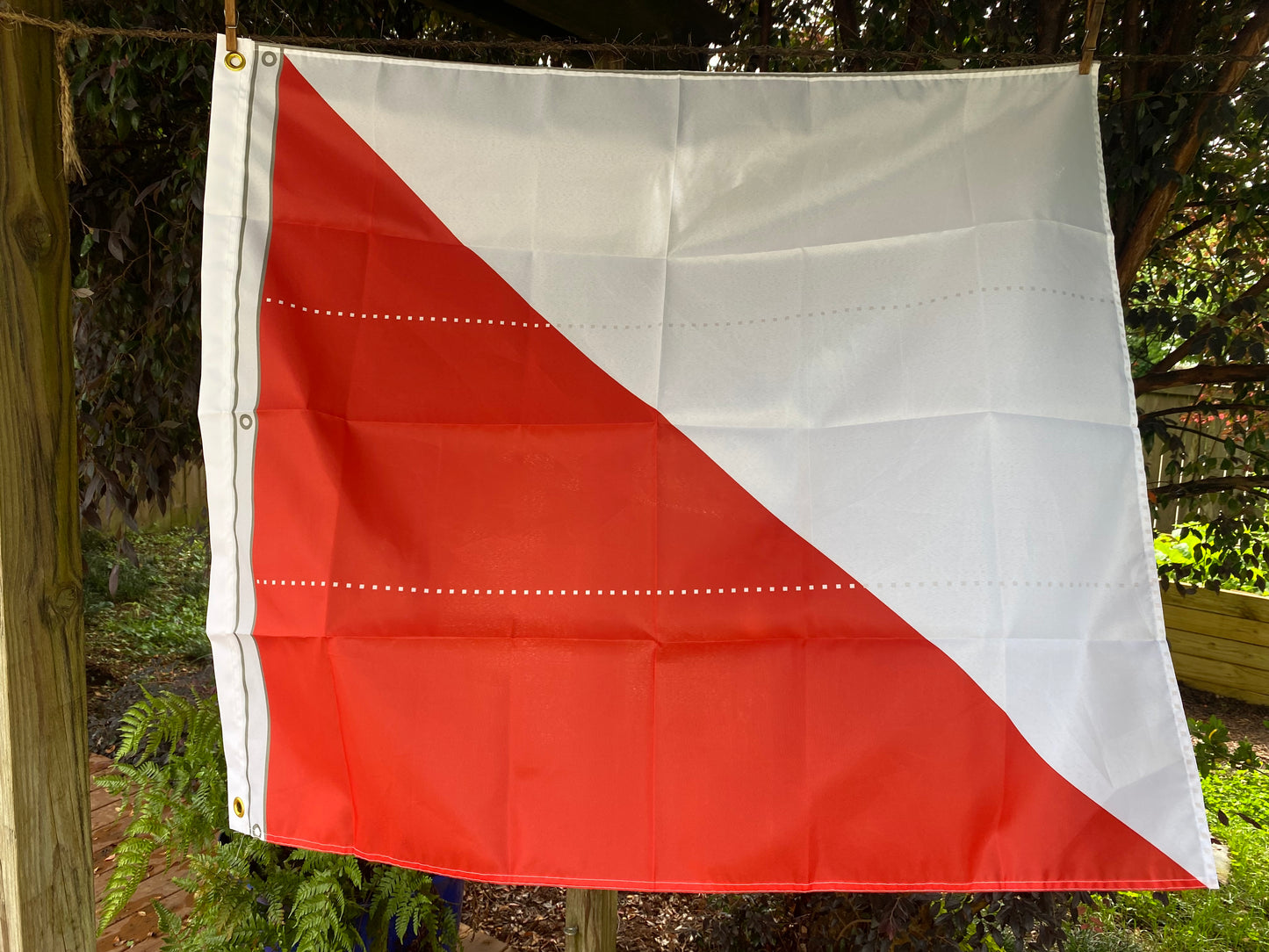Beauregard's Tailor
Army of the Peninsula Flag
Army of the Peninsula Flag
Couldn't load pickup availability
These are modern all-weather nylon flags for your house or garden based on the original flag carried by the Army of the Peninsula in 1861-1862.
These flags are made to order and take about 3 weeks to produce and ship.
Original flag can be viewed here.
Historical Background:
The Confederate Army Of the Peninsula, under the command of Major General John B. Magruder, was charged with the defense of the critical peninsula between the York and James Rivers southeast of Richmond, Virginia. On 9 April 1862, as reinforcements arrived from Northern Virginia to help counter Union General McClellan’s thrust up the peninsula, Magruder found it necessary to inform his troops that the newly arriving forces from the Army of the Potomac carried a distinctive battle flag. This circular to his men described a flag with a, “Pink Ground – Blue diagonal cross-bars with white stars along the bars – yellow border binding two inches wide.” This basically was describing the 2nd type of the silk issue “Beauregard battle flags” that had been distributed to the four divisions and outlying brigades of the Confederate Army of the Potomac in November and December of 1861.
The appearance of this “new” battle flag prompted General Magruder to adopt a distinctive battle flag for the units that had been under his command. The flag design he chose was remarkably simple — a rectangular bunting field approximately 53″ high on its hoist by 60″ on its fly. The field of this flag was divided diagonally from upper, staff corner to lower fly corner. The lower and staff corner of the flag was red; the upper and fly corner of the flag was white. A white canvas heading bearing three button hole eyelets completed the flag.
Six of the new flags were ready for distribution by 18 April, although Henry Bryan, Magruder’s adjutant-general, would not turn in a special requisition for 30 of these flags until the next day. Thirty staffs for these flags were purchased from Richmond ironmonger, L.L. Barnes three days later on 22 April. Evidently anticipating a greater need than the 30 flags requisitioned on 19 April, a total of 40 were made by Norfolk seamstress, Almedea (also spelled “Almanea”) Tompkins with bunting from the Norfolk Navy Yard, for which she was paid on 23 April 1862. Beyond the issue of six flags on 18 April, seventeen other units were destined to receive the new flags in April, accounting for 23 of the 30 requisitioned. What became of the others has yet to be discovered.
The battle flag of the Army of the Peninsula was relatively short-lived. Many, especially in D.H. Hill’s Division, were replaced as early as June of 1862 with the 2nd bunting issue battle flags from the Richmond Clothing Depot. Nevertheless, a few remained in service as late as the battle of Sharpsburg (Antietam) in September of 1862. A member of the 32nd Virginia Infantry recollected that at Sharpsburg, his regiment still carried a flag that was “red and white, the dividing line between the red and white passing diagonally across the flag”, which was riddled with bullets in the Maryland battle and had its staff cut in two. Although the 32nd Virginia would retain its battle worn flag, two other flags of this pattern were taken during the campaign and were turned in to McClellan’s headquarters. Two other similar flags survive, one of which belonged to the 53rd Georgia, a later addition to Semmes’ Brigade.
Shipping Timelines
Shipping Timelines
These flags are made to order and take about 4 weeks to produce and ship.
Share










